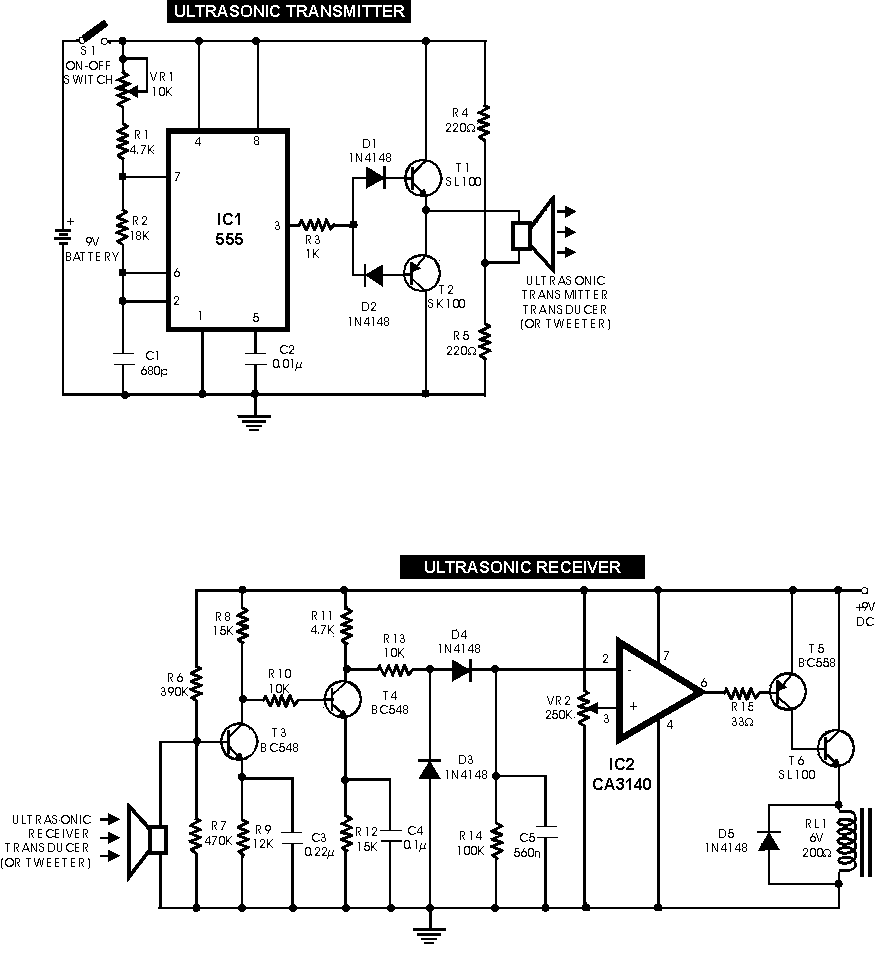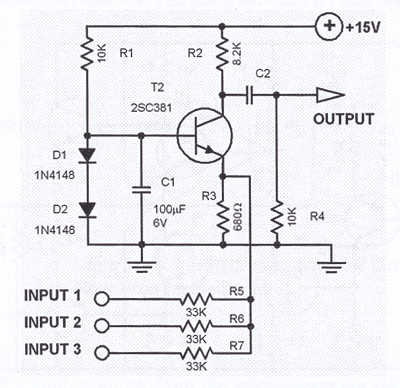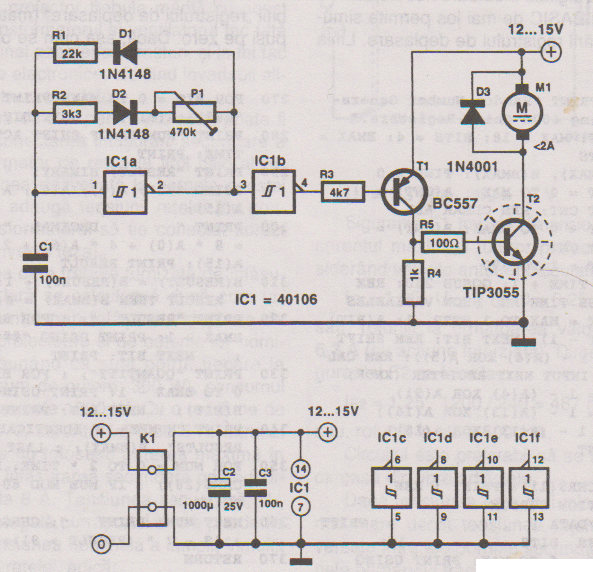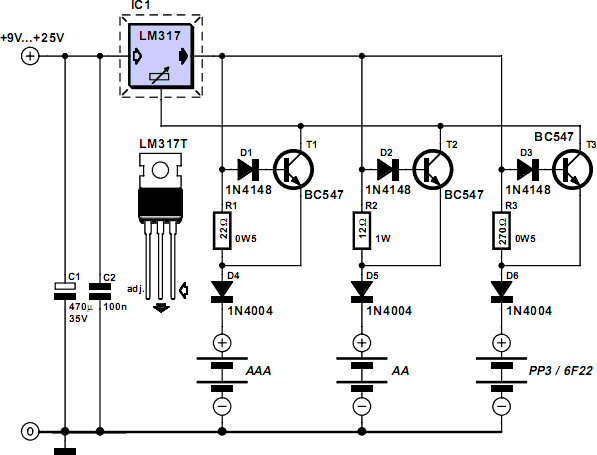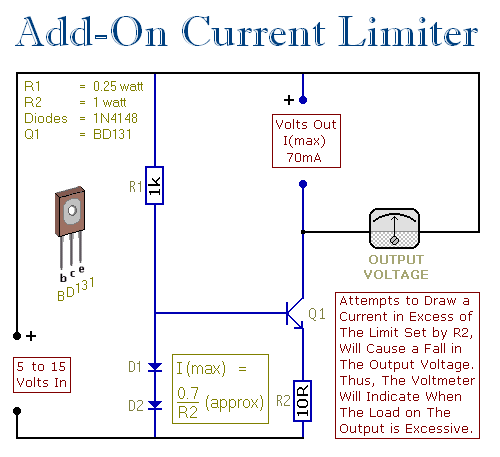
Multi-point circuit diagram of a remote control switch
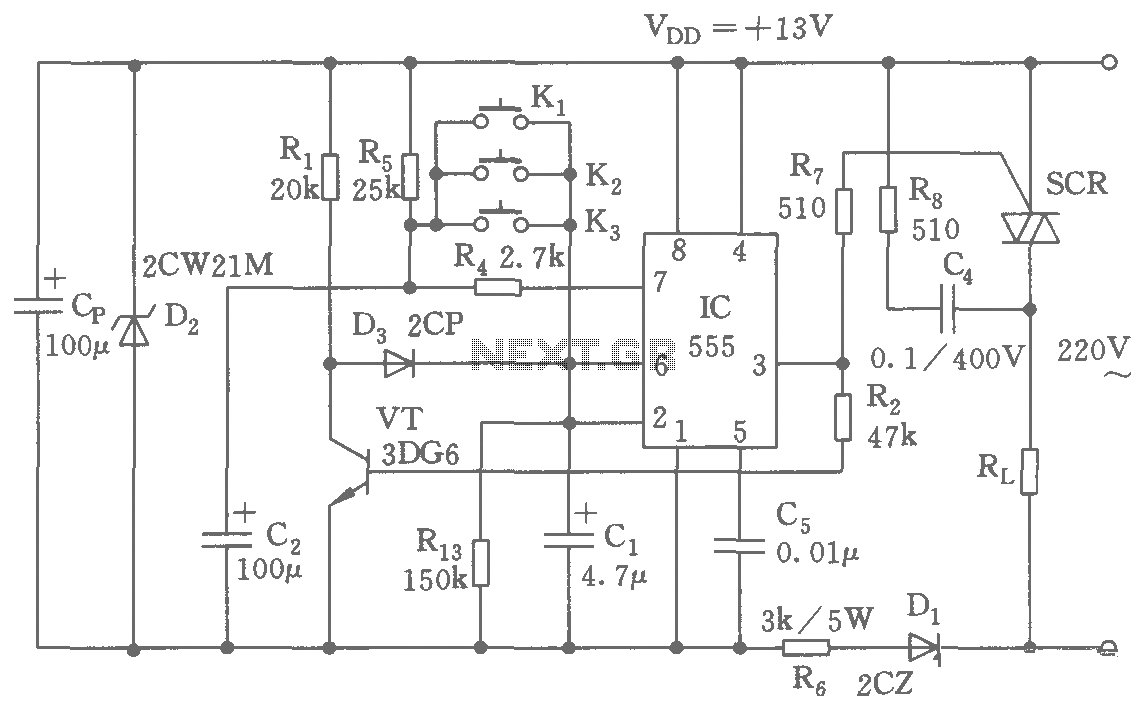
The switching circuit consists of a buck rectifier circuit, a bistable trigger circuit, and a thyristor control circuit, enabling remote control for electrical equipment to be turned on or off. The buck rectifier circuit supplies the controller with a DC voltage of 13V. The 555 timer, along with resistors R5, R4, R13 and capacitors C1, C2, forms a flip-flop circuit. Initially, the voltage on C1 remains stable, allowing the 555 timer to be set. Capacitor C2 charges through resistor R5 to 12V. When the switch K1 (K2 or Ks) is pressed, C1 rapidly charges to 2/3 of VDD, which is 8V, resulting in a low signal at pin 3 of the 555 timer, turning off the SCR. Consequently, the VT is cut off, and the 555 timer's pin 6 goes high, maintaining the reset state of the 555 timer. Upon pressing K1 (K2 or Ks) again, the 555 timer enters the set state, enabling control over the electrical device's operation.
The circuit operates by first converting the AC input voltage to a regulated DC output using the buck rectifier. This rectifier is crucial for providing a stable 13V DC supply to the subsequent control circuitry. The 555 timer is configured in a bistable mode, allowing it to toggle between two states based on input signals from the switches (K1, K2, or Ks). The flip-flop behavior is established through the charging and discharging cycles of capacitors C1 and C2, influenced by the resistors R4, R5, and R13.
In the initial state, with C1 charged, the 555 timer is set to a high state. Pressing the control switch (K1, K2, or Ks) causes C1 to charge quickly, triggering a transition in the 555 timer. This transition generates a low output at pin 3, effectively turning off the SCR, which in turn cuts off the voltage to the load (VT). The feedback mechanism involving pin 6 of the 555 timer ensures that the circuit remains stable in its reset state until the next activation occurs.
This design allows for efficient control of electrical devices, providing the ability to turn them on or off remotely. The use of a thyristor for switching enhances the circuit's capacity to handle higher loads, making it suitable for various applications in automation and remote control systems. The careful selection of component values (R and C) determines the timing characteristics and responsiveness of the control circuit, allowing for customization based on specific requirements.As shown, the switching circuit comprises a buck rectifier circuit, the bistable trigger circuit and the thyristor control circuit. Implement remote control for electrical equipment turned on or off. Buck rectifier circuit provides the controller with a DC voltage of 13V. 555 and R5, R4, R13, C1, C2 and so flip-flop circuit. Just power, because the voltage on C1 is not mutation, 555 set, C2 through R5 charged to l2V. If you click this time K1 (K2 or Ks), C1 is quickly charged to a 2/3 VDD = 8V, 555 reset pin 3 referred to the low level, SCR off. Meanwhile, VT cut-off, 555 were 6 feet high, so that the reset 555 in a stable state. As then click K1 (K2 or Ks), and 555 is in the set state. So control K, can be realized on the electrical opening and closing control.
The circuit operates by first converting the AC input voltage to a regulated DC output using the buck rectifier. This rectifier is crucial for providing a stable 13V DC supply to the subsequent control circuitry. The 555 timer is configured in a bistable mode, allowing it to toggle between two states based on input signals from the switches (K1, K2, or Ks). The flip-flop behavior is established through the charging and discharging cycles of capacitors C1 and C2, influenced by the resistors R4, R5, and R13.
In the initial state, with C1 charged, the 555 timer is set to a high state. Pressing the control switch (K1, K2, or Ks) causes C1 to charge quickly, triggering a transition in the 555 timer. This transition generates a low output at pin 3, effectively turning off the SCR, which in turn cuts off the voltage to the load (VT). The feedback mechanism involving pin 6 of the 555 timer ensures that the circuit remains stable in its reset state until the next activation occurs.
This design allows for efficient control of electrical devices, providing the ability to turn them on or off remotely. The use of a thyristor for switching enhances the circuit's capacity to handle higher loads, making it suitable for various applications in automation and remote control systems. The careful selection of component values (R and C) determines the timing characteristics and responsiveness of the control circuit, allowing for customization based on specific requirements.As shown, the switching circuit comprises a buck rectifier circuit, the bistable trigger circuit and the thyristor control circuit. Implement remote control for electrical equipment turned on or off. Buck rectifier circuit provides the controller with a DC voltage of 13V. 555 and R5, R4, R13, C1, C2 and so flip-flop circuit. Just power, because the voltage on C1 is not mutation, 555 set, C2 through R5 charged to l2V. If you click this time K1 (K2 or Ks), C1 is quickly charged to a 2/3 VDD = 8V, 555 reset pin 3 referred to the low level, SCR off. Meanwhile, VT cut-off, 555 were 6 feet high, so that the reset 555 in a stable state. As then click K1 (K2 or Ks), and 555 is in the set state. So control K, can be realized on the electrical opening and closing control.
